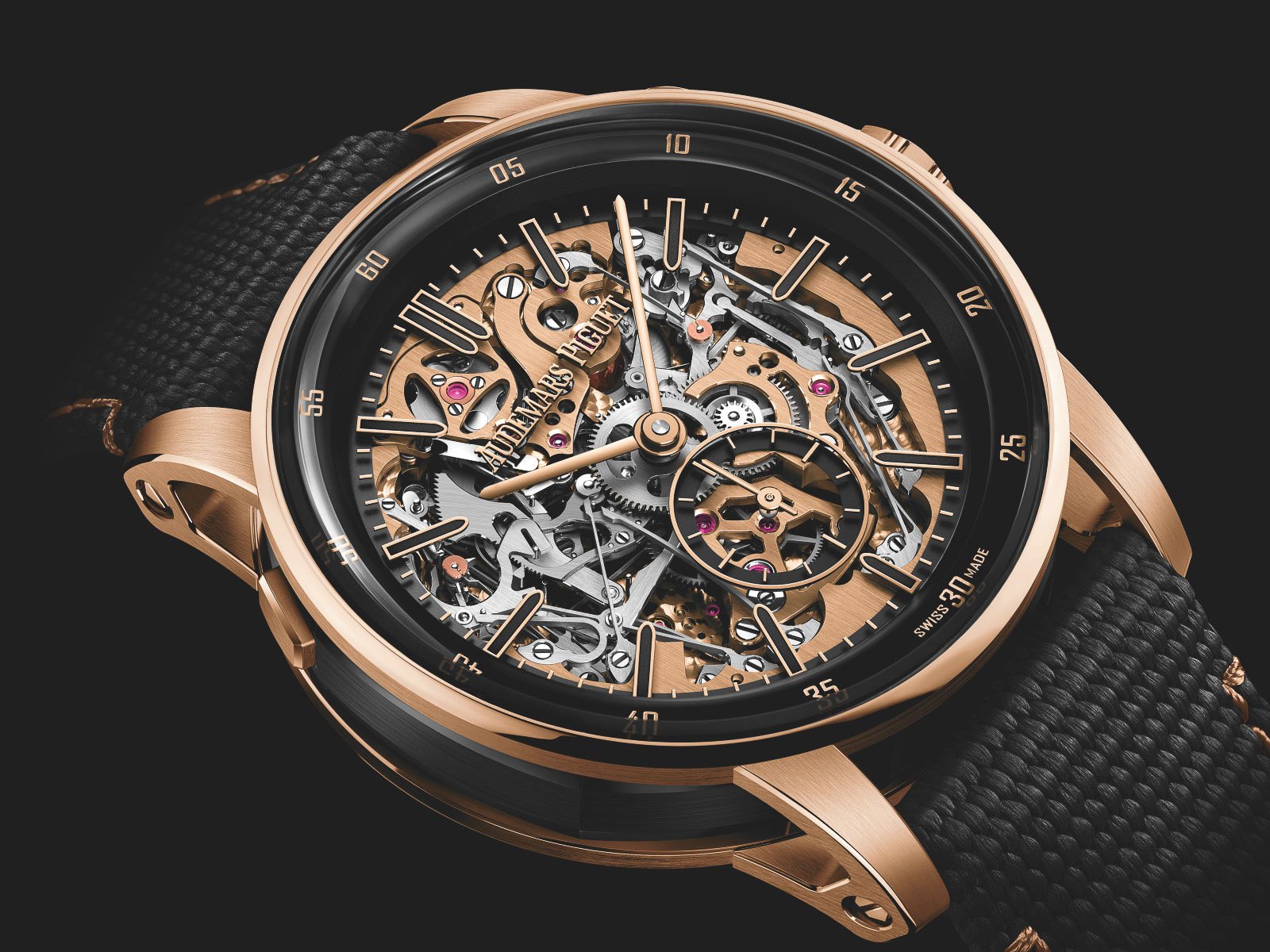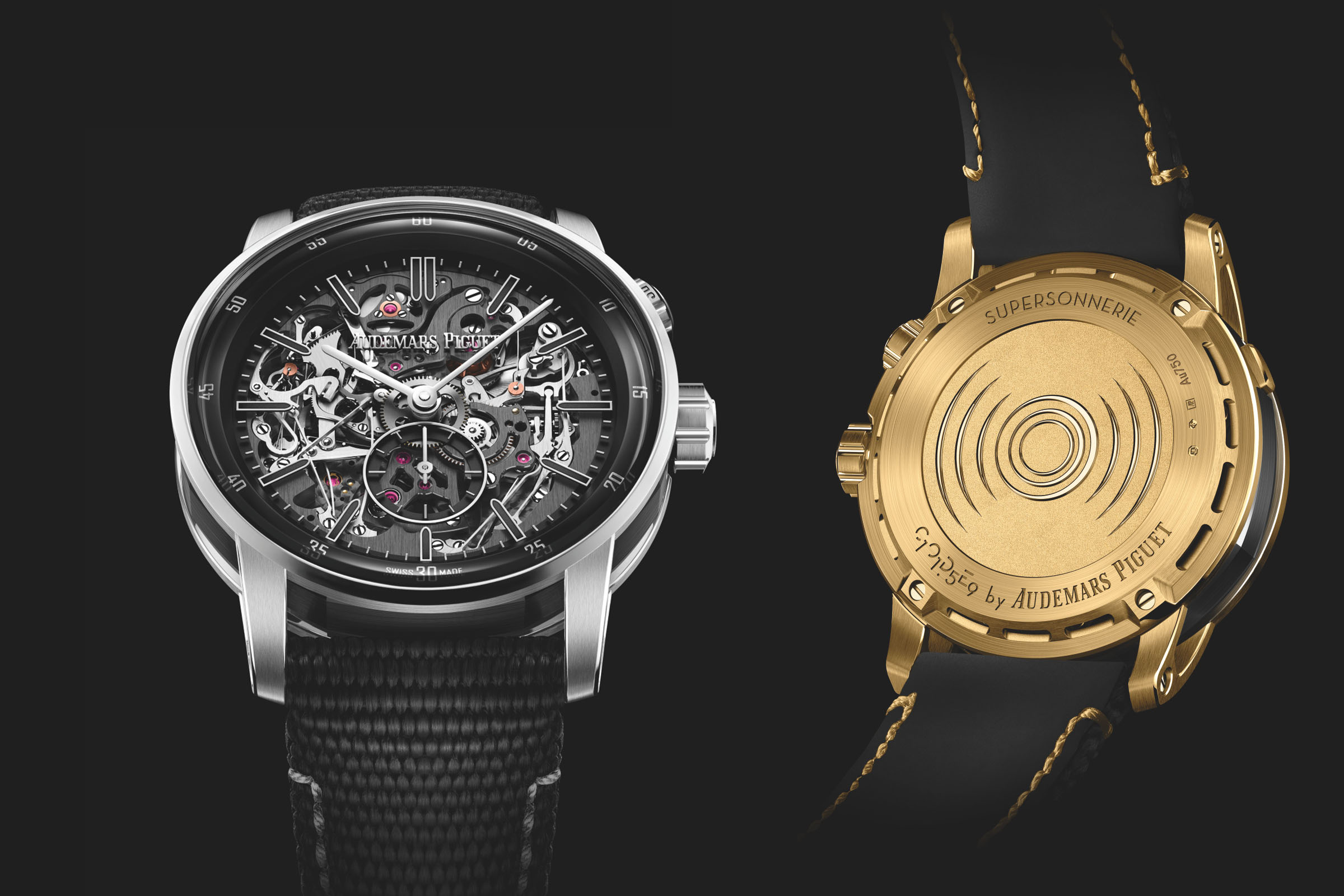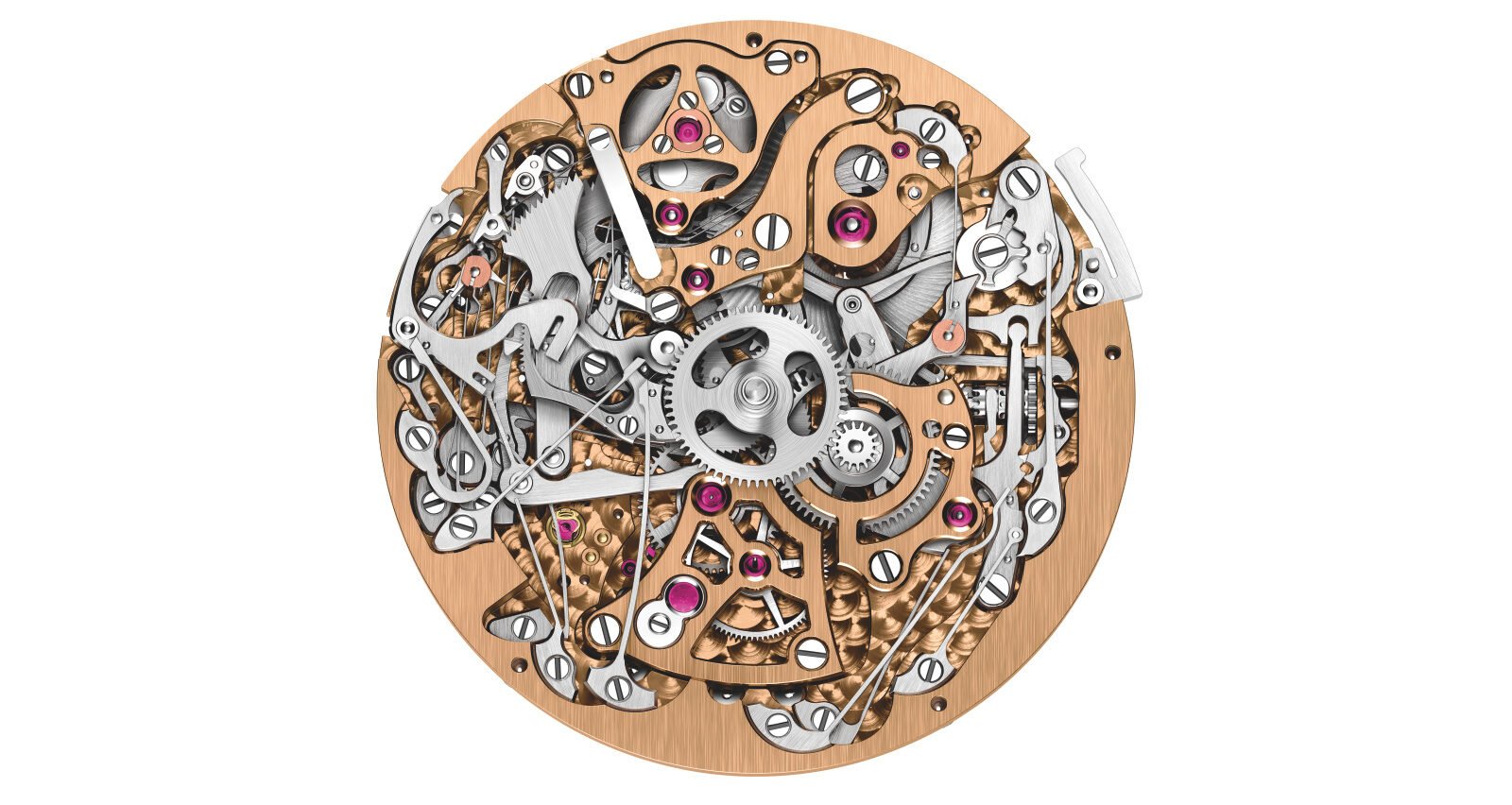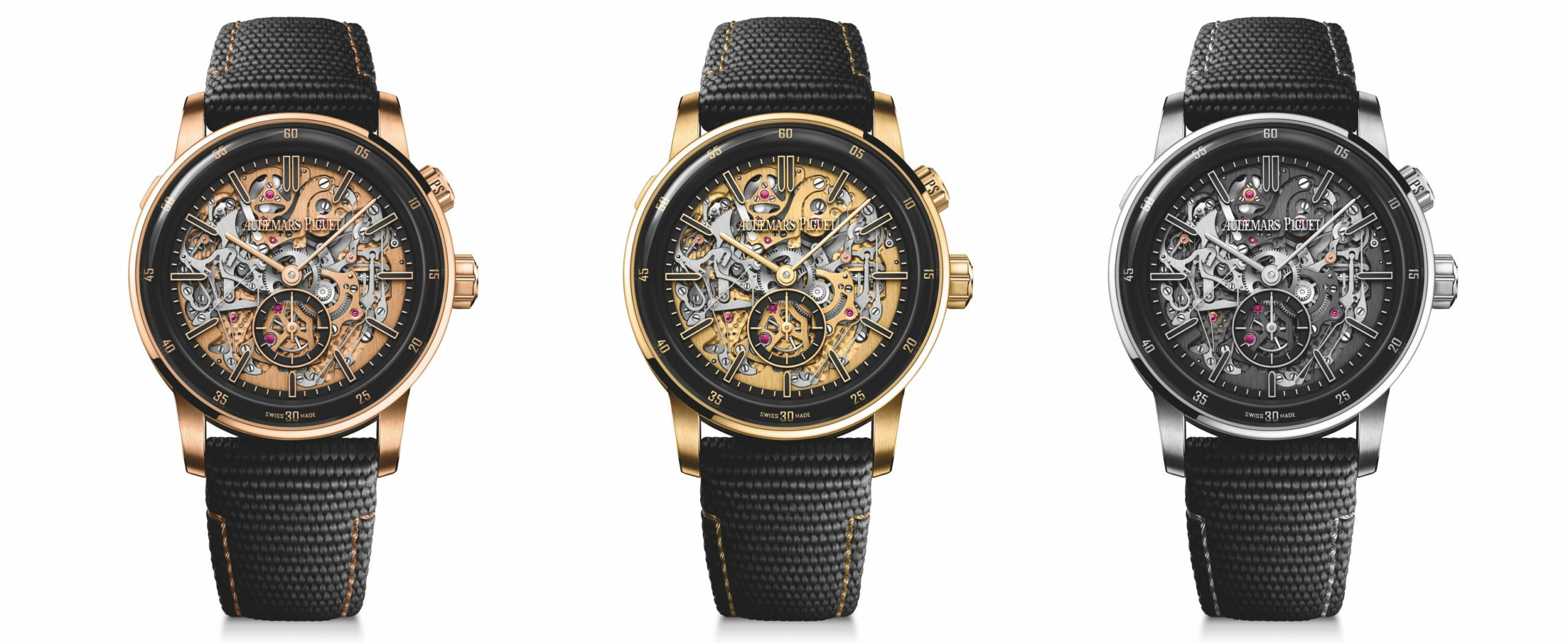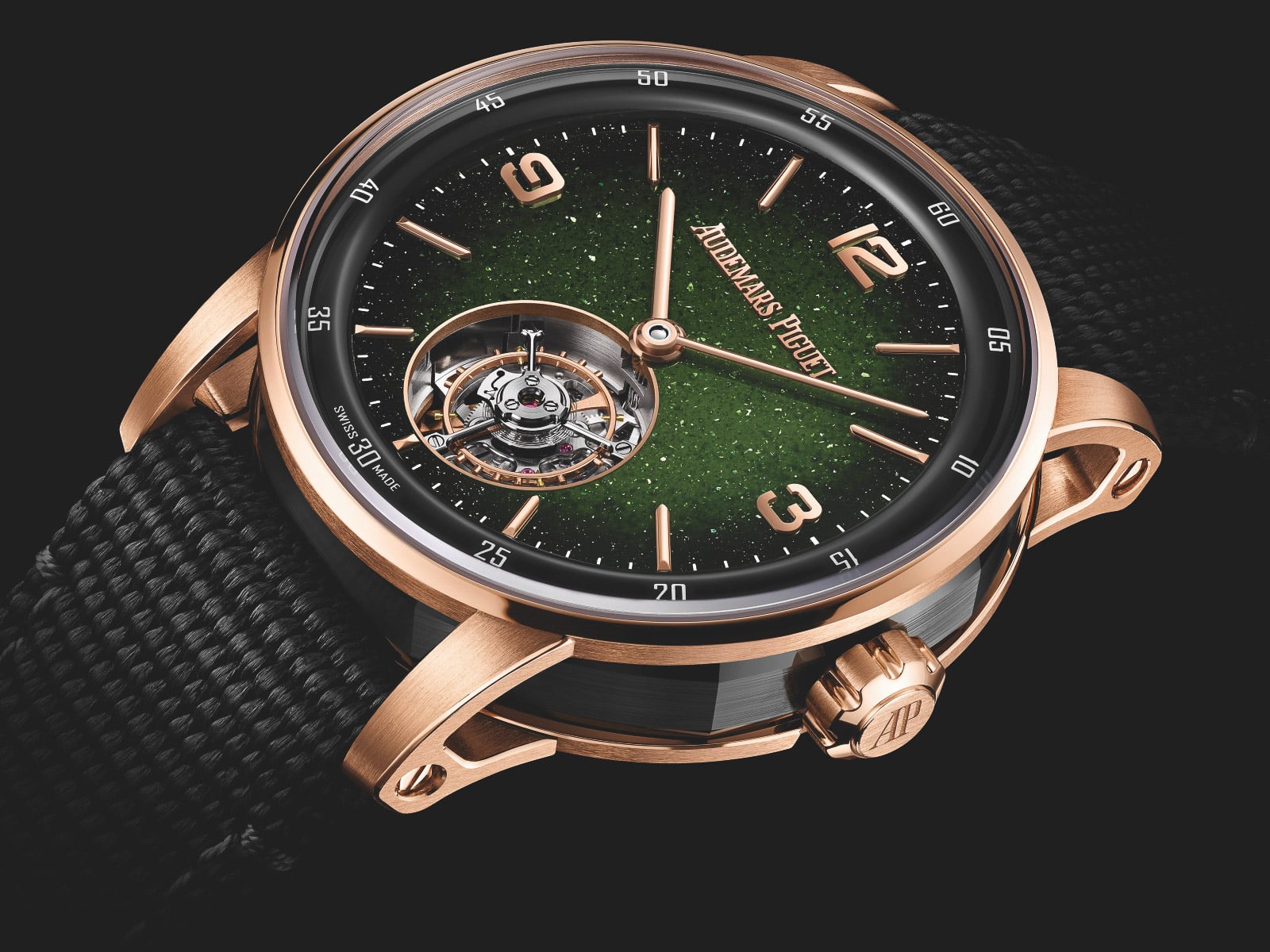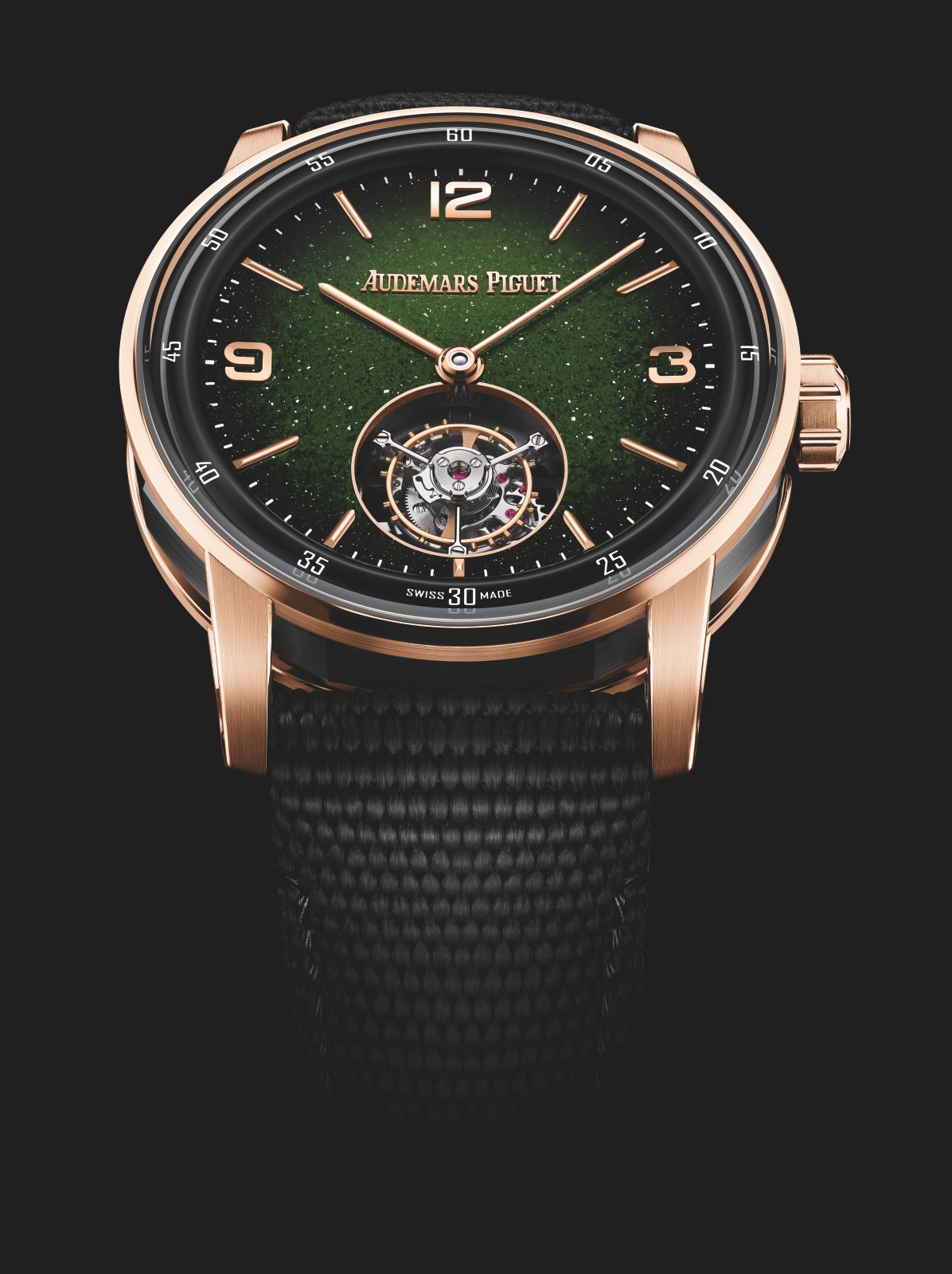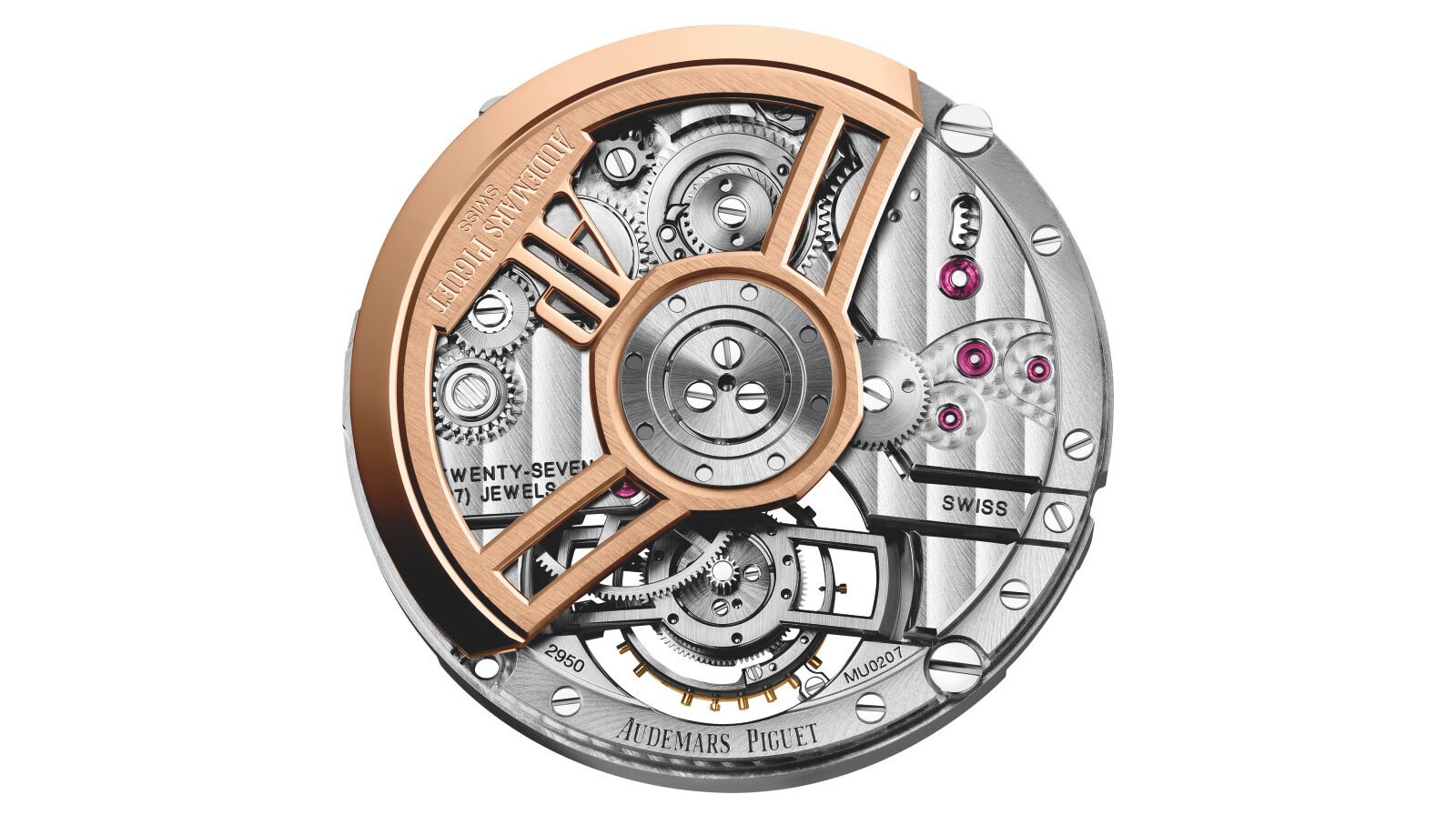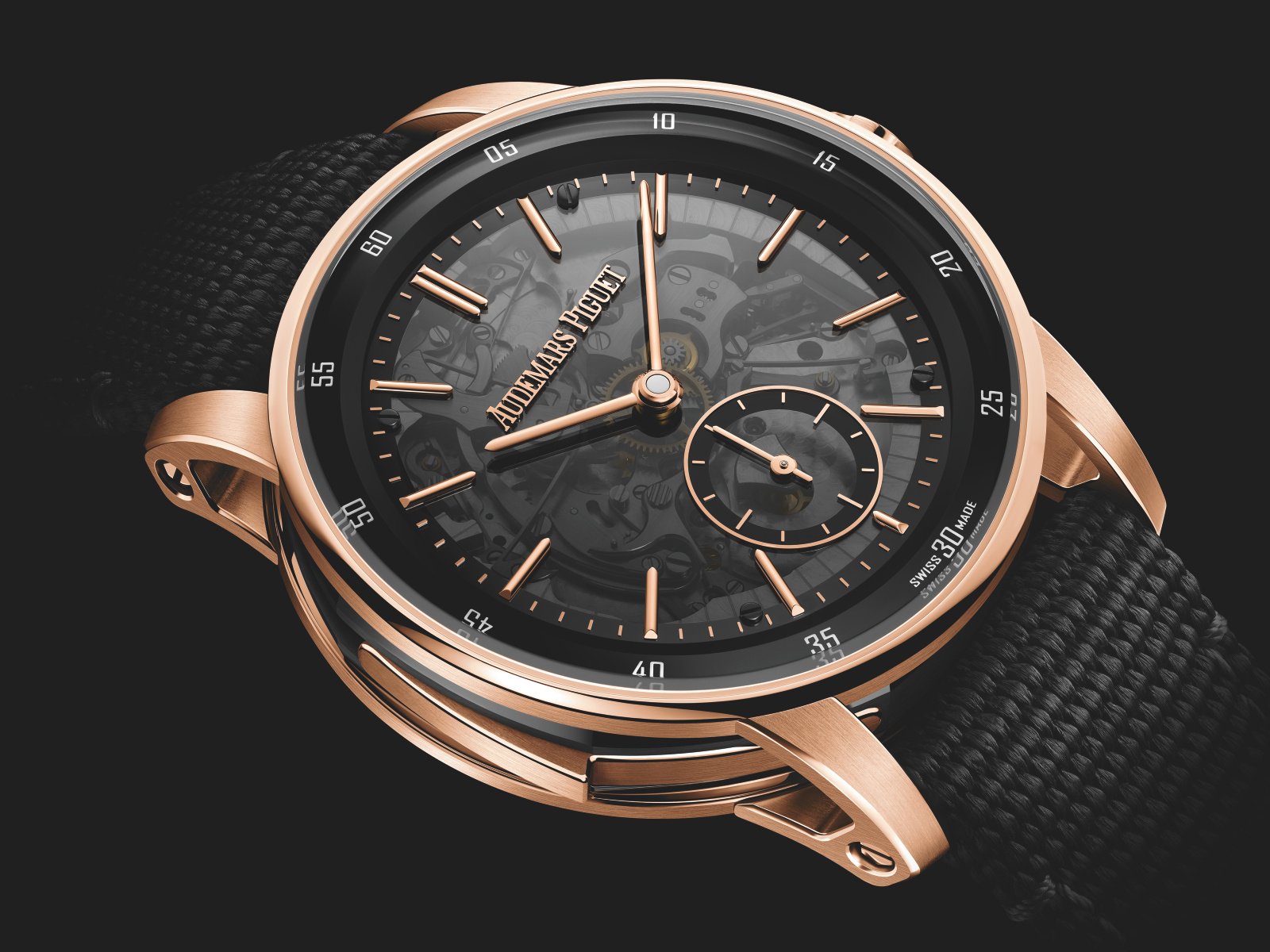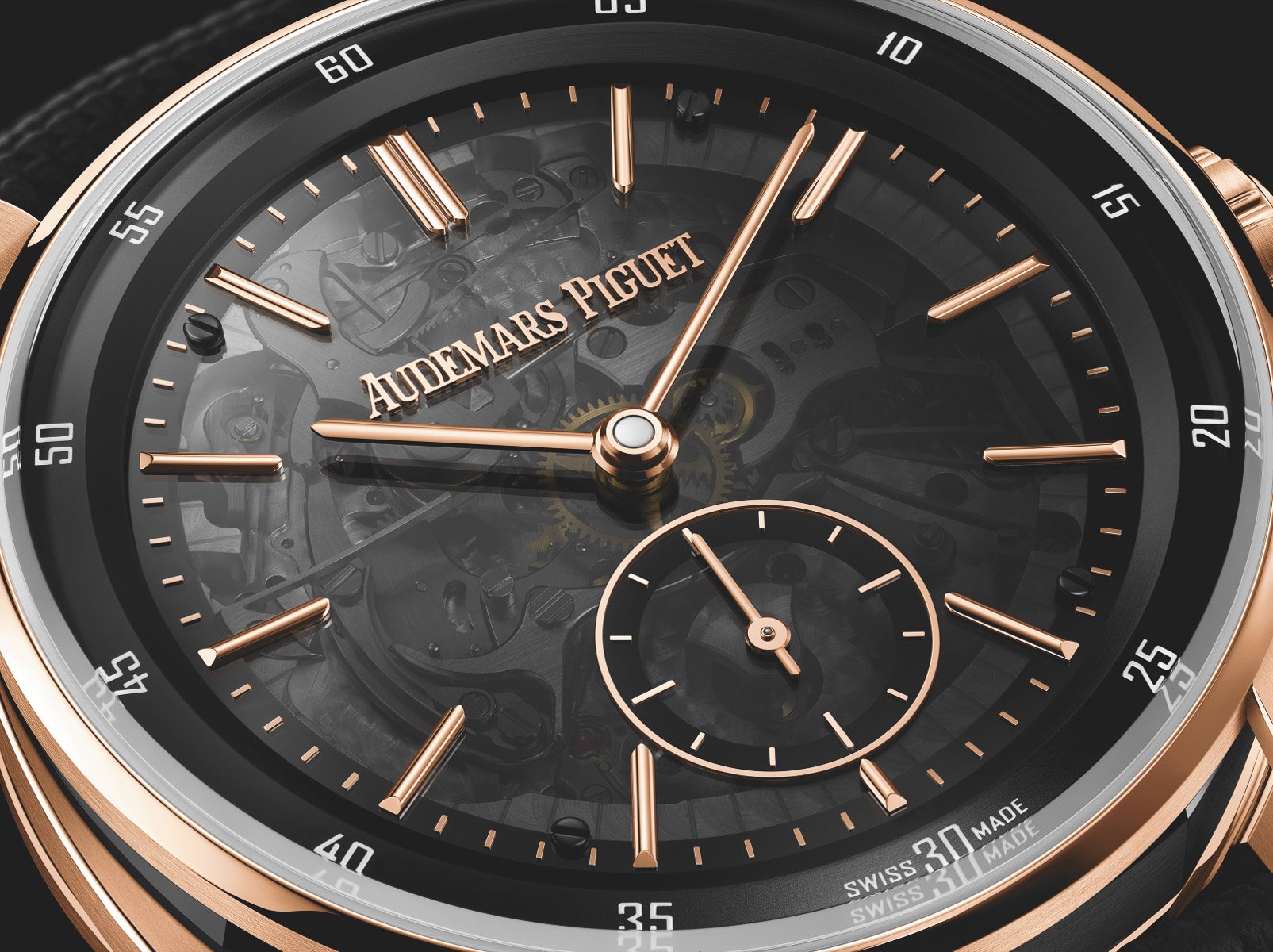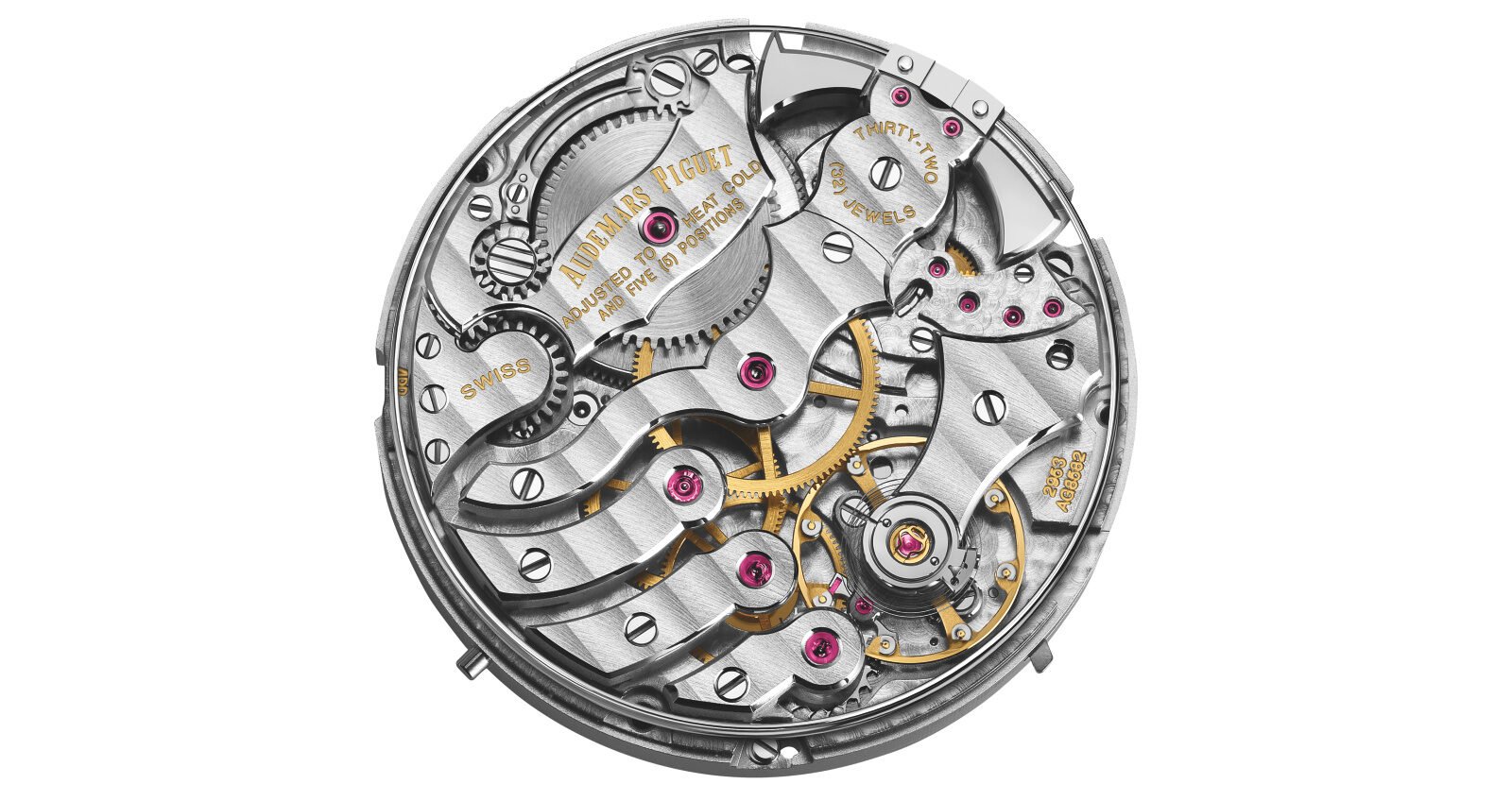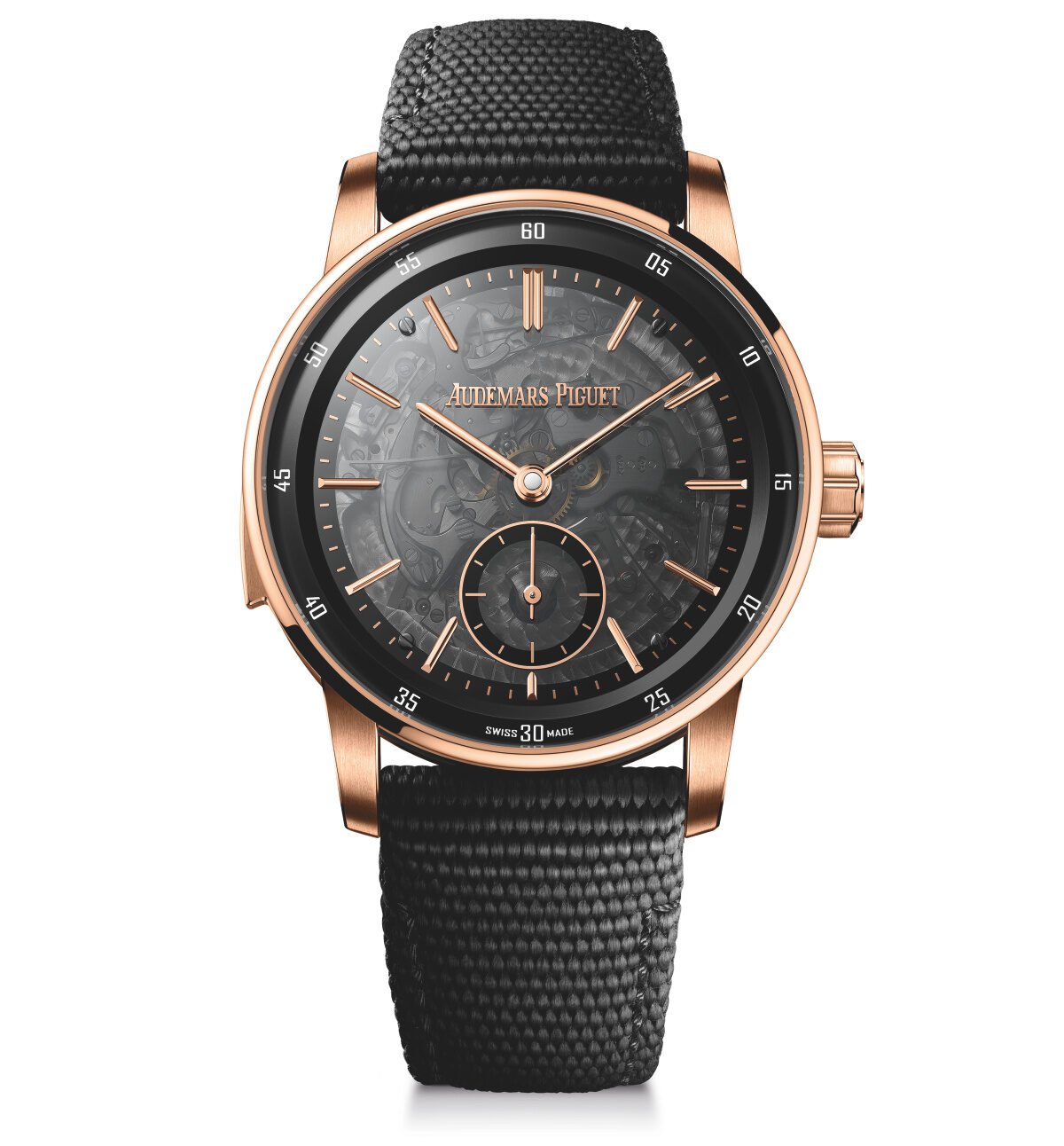Audemars Piguet Introduces Three New Complicated Code 11.59 Models — Grande Sonnerie Carillon Supersonnerie, Flying Tourbillon, And Minute Repeater
It’s been ten days since Audemars Piguet unveiled its mindblowing Code 11.59 By Audemars Piguet Ultra-Complication Universelle RD#4. The watch introduced a new movement that is nothing short of stunning. Add the ingenious usability and the friendly size, and the watch became one of the undisputed highlights of this new watch year. But it did something else too: it put the Code 11.59 collection in a different light for many watch fans. We did not cover the remaining complicated Code 11.59 models in all the AP madness. With all the dust clouds gone, let’s look at them now and see what they add to the Code 11.59 collection.
A little over a week has passed, and that beige-dialed Code 11.59 By Audemars Piguet Ultra-Complication Universelle RD#4 has not left my mind. It perfectly showed the design potential of the Code 11.59 collection, and I have not forgotten that it is a technical and functional masterpiece too. But the different light that I was hinting at was the shifting perception of the Code 11.59 collection. When the line debuted in 2019, many people criticized it as bland and low-effort. Four years on, we have seen versatility in design solutions that have won over some of the critics who hated the initial design. Another three complicated models show more versatility and different faces. Time to find out more.
The Code 11.59 By Audemars Piguet Grande Sonnerie Carillon Supersonnerie
The first new model is actually a trio. The Code 11.59 Grande Sonnerie Carillon Supersonnerie comes in three different variations — white gold, yellow gold, and pink gold. It features the characteristic three-layer case construction with open-worked lugs. The case measures a modest 41mm wide and 13.5mm thick. As you can see in the picture, the middle layer, modeled after the octagonal shape of the Royal Oak, is black ceramic. It makes all three watches two-tone gold and black ceramic pieces.
While that is impressive in its own right, it’s not where the true magic is. It’s all in the Audemars Piguet Calibre 2956, visible through the sapphire dial. We have seen some amazing dials used for the Code 11.59, but this is the first time that Audemars Piguet has given the watch a sapphire dial. As a result, you get a great view of the manual-winding 498-part movement. Each open-worked dial is enclosed by a semi-matte black opaline inner bezel that features the 60-minute numerals. The actual minute track with the applied gold hour markers with black metalized centers seems to be hovering above the movement. The brand logo also seems to hover above the spectacular movement, as does the small seconds indicator, executed in gold above a black ring at 6 o’clock.
The in-house Audemars Piguet Calibre 2956
As mentioned, the watch is powered by the brand’s in-house Calibre 2956. This movement combines a Grand Sonnerie complication with a carillon and the brand’s patented Supersonnerie technology. As many of you will know, a Grande Sonnerie mechanism strikes the hours and every quarter-hour in passing without any involvement of the wearer. Additionally, it strikes the hours, quarters, and minutes on command, just as a traditional minute repeater would do. The wearer of this spectacular piece can also opt for either a grand strike (hour and quarter hours) or a small strike (hours only). Lastly, you can switch to silent mode so that the movement does not make any sound.
Audemars Piguet also equipped the watch with a carillon, meaning the movement features three gongs and hammers instead of the usual two. It allows for striking the quarter hour with a high, middle, and low note instead of the usual two notes. Finally, the watch features the brand’s patented Supersonnerie mechanism that enhances the acoustic performance and improves the overall sound quality. The movement operates at 21,600vph and has a 48-hour power reserve.
Three different versions of these one-of-a-kind Code 11.59 timepieces
As mentioned, there are three different versions. All of them are unique pieces, so only one will be made of each. All three come with a black rubber-coated strap with matching gold-colored stitching and a gold folding clasp. The price for these pieces is on request. Or maybe it is better to say that they were on request because, with one made of each, it won’t be a surprise if they have all sold by now.
The sapphire crystal dial adds a spectacular visual dimension to an impressive watch. It allows for another great display of the technical wizardry that Audemars Piguet is capable of. Additionally, it proves that great things happen if the brand refrains from using the much-debated Code 11.59 font. It’s hard to fault the design of these three pieces by just looking at them and reading about the technical mastery within.
The Code 11.59 By Audemars Piguet Flying Tourbillon with a smoked green aventurine dial
A second introduction that does use the font mentioned above is the new Code 11.59 Flying Tourbillon with a smoked green aventurine dial. The Code 11.59 Flying Tourbillon was part of the introduction collection that Audemars Piguet launched back in 2019. It featured a black Grand Feu enamel dial. The brand released the same watch a year later with black aventurine enamel and blue gradient aventurine enamel dials. Essentially, the dial makers covered the gold dials with a blend of crushed aventurine glass and Grand Feu enamel. The results were a lot more spectacular than the initial release from a year before.
The brand decided to take this new version one step further. The gold dial is covered with a mix of crushed green aventurine glass and enamel for this new piece. The effect is stunning, especially with the two-tone pink gold and black ceramic case. It is an absolute showstopper, although I would have loved seeing the 3, 9, and 12 numerals make way for regular hour markers. We have seen that it works miracles for other models.
The in-house Audemars Piguet Calibre 2950
Inside the 41 × 11.8mm case, you will find the automatic in-house Calibre 2950. This is the same movement that powered the previous models. It beats at 21,600vph and provides 65 hours of power reserve and a flying tourbillon at 6 o’clock. The movement is visible through the sapphire window on the case back, and you can get a nice unobstructed view of the tourbillon mechanism on the dial side. As the flying tourbillon is cantilevered from the bottom, no bridges block the view, which adds to the visual power. But I must say, that green smoky dial is the absolute star of the show. If only…
The Code 11.59 by Audemars Piguet Minute Repeater with a smoked sapphire dial
If only AP’s designers had chosen to replace the 12, 3, and 9 numerals with hour markers as they have done for the last new model. The Code 11.59 Minute Repeater with a smoked sapphire dial perfectly shows that the Code 11.59 does not need the numerals. For me, that proof came with the stunning Code 11.59 Perpetual Calendar that was part of the initial collection from 2019. That watch immediately showed that we don’t need the numerals, and the new Minute Repeater version is further validation of that. Whereas the 2019 model did have the numerals, this new version gloriously leaves them out.
This new Minute Repeater has the same two-tone case executed in pink gold and black ceramic as the previous models. The case is 41mm in diameter and 13.6mm thick and holds the hand-wound Calibre 2953. You can see the movement through the brilliant smoky sapphire dial. The tinted sapphire is dark enough to give the feeling of an actual dial, but it is light enough to unveil the magic of the movement both in its technical wizardry and stunning finish. Pink gold hour and minute markers grace the sapphire dial, giving it enough character to make it instantly recognizable without the numerals.
The in-house Audemars Piguet Calibre 2953
A small seconds indicator is neatly placed at 6 o’clock with a black circle underneath that provides some extra contrast. The manual-winding in-house Calibre 2953 operates at 21,600vph and has a 72-hour power reserve. The minute-repeater movement also features the patented Supersonnerie mechanism that I mentioned before. The mechanism enhances the acoustic quality of the sound. In a traditional chiming movement, gongs are fixed to the movement’s mainplate. The Supersonnerie mechanism changes that by positioning the gongs on a separate soundboard. That optimizes the vibrations, and they are not transmitted to the mainplate, thus improving the sound quality, tone, and resonance.
While the movement is a beauty and a wonder to see in action, the dial is the main attraction for me. It perfectly demonstrates that the Code 11.59 watches do not need the numerals that have caused so much discussion. It is proven by all the new releases, both complicated and not complicated, that were released a little over a week ago. Audemars Piguet can easily leave them out, and doing so will drastically improve the Code 11.59 collection. Overall, the positive feedback on the pieces that don’t feature them has been overwhelmingly good — so good that some of the greatest cynics have taken a liking to the new Code 11.59 models. And the fact that we have seen more without them than with them says a lot.
For more information, visit the official Audemars Piguet website. Let us know in the comments section which of these three releases you like best.

